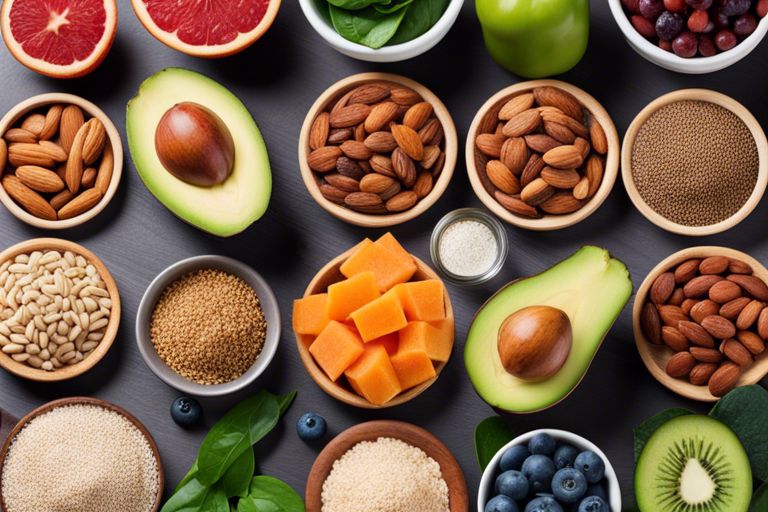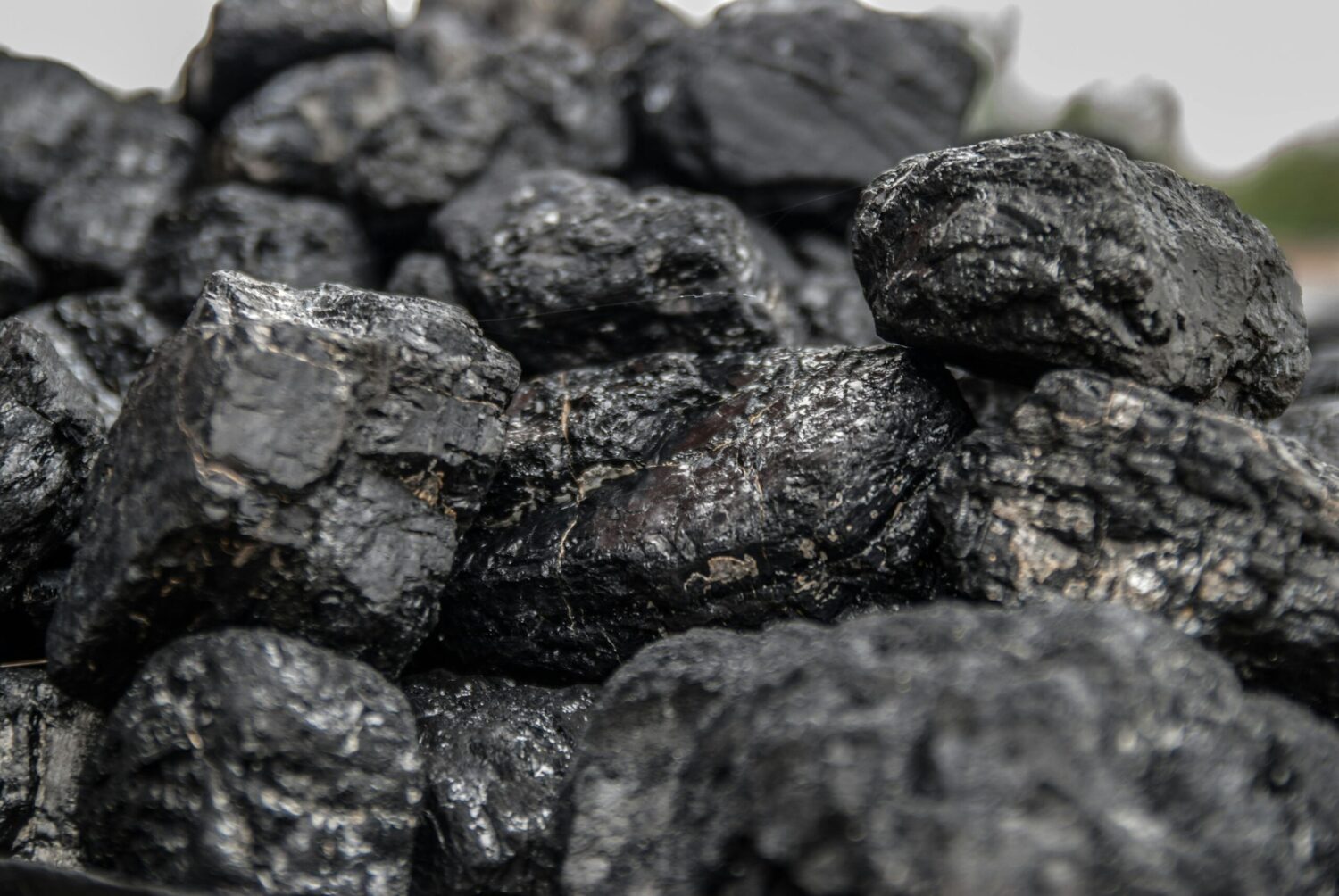Health is crucial, and a balanced meal plan plays a key role in achieving long-term health and fitness goals. By understanding your nutritional needs and making informed choices, you can fuel your body effectively, boost energy levels, and promote overall well-being. In this blog post, you will learn step-by-step how to create a personalized and sustainable meal plan that supports your health and fitness journey.
1. Identify nutritional needs based on age, weight, and activity level.
2. Include a variety of fruits, vegetables, whole grains, and lean proteins.
3. Limit processed foods high in sugar, salt, and unhealthy fats.
4. Plan meals ahead to ensure a balanced intake of nutrients.
5. Drink plenty of water throughout the day.
6. Adjust portion sizes to maintain a healthy weight.
Understanding Your Nutritional Needs
The key to creating a balanced meal plan for long-term health and fitness is understanding your nutritional needs. By tailoring your diet to fit your specific requirements, you can fuel your body effectively and reach your health goals.
Determining Your Caloric Requirements
For calculating your caloric needs, you need to consider factors such as your age, gender, weight, height, activity level, and fitness goals. This will give you a starting point to understand how many calories you need to consume each day to maintain, lose, or gain weight.
Identifying Essential Macronutrients and Micronutrients
There’s more to nutrition than just counting calories. Your body requires a balance of important macronutrients (carbohydrates, proteins, and fats) and micronutrients (vitamins and minerals) to function optimally. These nutrients play crucial roles in supporting your immune system, energy levels, muscle growth, and overall well-being.
It is important to make sure you are getting an adequate intake of important macronutrients and micronutrients to prevent deficiencies and maintain good health. Including a variety of fruits, vegetables, whole grains, lean proteins, and healthy fats in your diet can help you meet your nutritional needs.
Setting Realistic Goals and Expectations
Some people set ambitious goals for their fitness journeys without considering the practicalities of achieving them. It’s vital to create a meal plan for your fitness goals that are attainable and sustainable in the long run. By setting realistic goals and expectations, you set yourself up for success and avoid unnecessary frustration along the way.
Assessing Your Current Diet and Lifestyle
Diet plays a significant role in your overall health and fitness journey. Before begining on a new meal plan, take some time to assess your current eating habits and lifestyle. Look at what you typically eat, when you eat, and how your meals make you feel. This self-assessment will give you valuable insights into areas where you can make improvements and help you tailor your meal plan to suit your needs.
Defining Achievable Objectives for Weight Loss and Fitness
Clearly defining your goals for weight loss and fitness is crucial in creating a balanced meal plan. Setting specific and measurable objectives can help you track your progress and stay motivated. Whether your goal is to shed a few pounds, build muscle, or improve your overall health, make sure your objectives are realistic and achievable within a reasonable timeframe. Bear in mind, sustainable changes take time, so be patient with yourself as you work towards your goals.
Weight loss and fitness goals should be tailored to your individual needs and preferences. Consulting with a healthcare professional or a nutritionist can help you set achievable objectives based on your current health status and lifestyle. They can provide guidance on the right balance of nutrients and calories for your body, ensuring that your meal plan supports your long-term health and fitness goals.
Key Factors to Consider When Creating a Meal Plan
Many factors come into play when you are creating a balanced meal plan for long-term health and fitness. It is important to tailor your meal plan to your individual needs and goals. Here are some key factors to consider:
Age, Gender, and Body Type
Assuming you are looking to create a meal plan that supports your long-term health and fitness goals, it’s crucial to take into account your age, gender, and body type. **Your** age can affect your metabolism and nutrient needs, while **your** gender and body type can influence **your** calorie requirements. For example, **women** typically have different nutritional needs than **men**, and individuals with a higher muscle mass may need more protein in **their** diet. **The** key is to customize **your** meal plan based on **your** specific characteristics to ensure **your** nutritional needs are met.
Dietary Restrictions and Preferences
When creating a meal plan, it’s important to consider any dietary restrictions or preferences **you** may have. Whether **you** are vegetarian, vegan, gluten-free, lactose intolerant, or have allergies to certain foods, it’s crucial to **tailor** **your** meal plan to accommodate **your** needs. **Another** factor to consider is **your** dietary preferences, such as **your** favorite foods or flavors. **By** incorporating **foods** **you** enjoy, **you** are more likely to stick to **your** meal plan in the long run, making it sustainable for **you**.
Lifestyle and Schedule
Assuming you lead a busy lifestyle, **you** need to consider **your** schedule when creating a meal plan. **Your** daily routine can impact **your** meal timings and the type of meals **you** can prepare. **Restrictions** in time may lead to **you** opting for quick and easy meal options, which may not always be the healthiest choices. **By** planning **your** meals ahead of time and prepping **meals** in advance, **you** can ensure **you** have nutritious options available even on **your** busiest days. **Remember**, incorporating regular meals and snacks into **your** day is crucial for maintaining **your** energy levels and supporting **your** health and fitness goals.
How to Choose the Right Foods for Optimal Nutrition
Not all foods are created equal when it comes to promoting your overall health and fitness goals. Choosing the right foods is imperative for providing your body with the nutrients it needs to function at its best. Here are some tips on selecting the best foods for optimal nutrition.
Fresh Fruits and Vegetables: Selection and Preparation Tips
Selection: When choosing fresh fruits and vegetables, opt for a variety of colors to ensure you are getting a wide range of vitamins and minerals. Look for produce that is firm, vibrant in color, and free from bruises or blemishes. For optimal freshness, consider buying in-season fruits and vegetables from local farmers markets.
- Wash your produce thoroughly to remove any pesticides or contaminants.
- Try different cooking methods such as steaming, roasting, or sautéing to retain the nutrients in your fruits and vegetables.
- Include a mix of raw and cooked fruits and vegetables in your meal plan to maximize nutrient intake.
Though it may take some extra effort, the benefits of including a variety of fresh fruits and vegetables in your diet are well worth it for your long-term health and fitness goals.
Lean Protein Sources: Benefits and Cooking Methods
Cooking: Concerning lean protein sources, such as chicken, turkey, fish, tofu, and legumes, opt for cooking methods that require minimal added fats and oils. Grilling, baking, broiling, or poaching are healthier options compared to frying. These cooking methods help preserve the nutrient content of the protein while avoiding unnecessary saturated fats.
It is important to include lean protein sources in your meal plan as they are imperative for muscle repair and growth, as well as for keeping you feeling full and satisfied after meals.
Whole Grains and Complex Carbohydrates: Importance and Recipes
Vegetables: Including whole grains and complex carbohydrates in your meal plan is crucial for providing sustained energy throughout the day. Opt for whole grains such as brown rice, quinoa, oats, and whole-wheat bread to ensure you are getting fiber, vitamins, and minerals that are stripped away in refined grains.
Plus, try out different recipes using whole grains like a quinoa salad with mixed vegetables or a whole-grain pasta dish with lean protein and tomato sauce for a nutritious and satisfying meal that will support your health and fitness goals.
Meal Planning Strategies for Success
Portion Control and Meal Frequency
Unlike fad diets that restrict your food intake too much, a balanced meal plan focuses on portion control and meal frequency. Any successful meal plan involves eating the right amount of food at regular intervals to keep your metabolism steady and energy levels up. By portioning out your meals ahead of time, you can prevent overeating and ensure you are getting the right balance of nutrients throughout the day.
Snacking and Hydration Techniques
Portion control is key when it comes to snacking. By pre-portioning your snacks into small containers or bags, you can avoid mindless munching and keep track of your caloric intake. Additionally, staying hydrated is vital for your overall health and can help you differentiate between hunger and thirst. Make sure to drink plenty of water throughout the day and consider incorporating hydrating snacks like fruits and vegetables into your meal plan.
Strategies like keeping a water bottle with you at all times and setting reminders to drink water can help you stay on track with your hydration goals. In the matter of snacking, opt for nutrient-dense options like nuts, seeds, Greek yogurt, or hummus with veggies to keep you satisfied between meals.
Avoiding Common Diet Pitfalls and Mistakes
Portion control and mindful eating are crucial to avoiding common diet pitfalls and mistakes. By being aware of your portion sizes and listening to your body’s hunger cues, you can prevent overeating and make healthier choices. **Remember** that it’s okay to indulge occasionally, but **be mindful** of portion sizes and how often you treat yourself.
**Diet** culture can often lead to extreme restrictions and unrealistic expectations. **Focus** on nourishing your body with **whole, nutrient-dense foods** and **building a sustainable** meal plan that works for you in the long run. By **making gradual changes** and **forming healthy habits**, you can achieve **long-term success** in your **health and fitness journey**.
Tips for Effective Meal Planning and Grocery Shopping
Despite the busy schedules and hectic lifestyles, effective meal planning and grocery shopping are crucial for your long-term health and fitness goals. Here are some tips to help you streamline this process:
- Plan Your Meals: Take some time each week to plan out your meals for the upcoming days. This will not only help you stay organized but also ensure that you are consuming a balanced diet.
- Make a Grocery List: Once you have planned your meals, create a detailed grocery list with all the ingredients you will need. This will help you avoid impulsive purchases and stick to your healthy eating plan.
- Shop the Perimeter: When you are at the grocery store, focus on shopping around the perimeter where you will find fresh produce, lean proteins, and dairy products. This will help you avoid processed and unhealthy foods in the aisles.
Creating a Meal Planning Calendar and Grocery List
For effective meal planning and grocery shopping, start by creating a meal planning calendar. This calendar should outline your meals for the week, including breakfast, lunch, dinner, and snacks. Once you have your meals planned out, use this to create a detailed grocery list with all the ingredients you need for each meal. This will save you time at the store and ensure you have everything you need for healthy eating throughout the week.
Budget-Friendly Shopping Strategies and Coupons
Grocery shopping can add up quickly, but there are strategies you can use to save money and stick to your budget. Look for coupons and deals on healthy staples like whole grains, fruits, and vegetables. You can also buy in bulk or choose store brands to save money without compromising on nutrition. Additionally, consider shopping at local farmers’ markets for fresh, affordable produce.
Budget-Friendly shopping strategies and coupons can help you save money without sacrificing the quality of your meals. Look for discounts, buy in bulk, and compare prices at different stores to get the best deals on your healthy groceries. Remember to prioritize nutrient-dense foods over processed items to get the most out of your grocery budget.
Stocking a Healthy Pantry and Kitchen Essentials
Kitchen imperatives are crucial for maintaining a healthy and balanced diet. Make sure your pantry is stocked with whole grains, healthy fats, lean proteins, and plenty of fruits and vegetables. Having these imperatives on hand will make it easier for you to prepare nutritious meals at home without relying on takeout or unhealthy convenience foods.
With respect to stocking a healthy pantry and kitchen imperatives, focus on quality ingredients that will support your health and fitness goals. Invest in staple items like olive oil, quinoa, canned beans, and spices to add flavor and variety to your meals. By keeping these imperatives stocked, you’ll be prepared to whip up a healthy meal whenever hunger strikes.
How to Incorporate Healthy Fats and Oils into Your Diet
Understanding Omega-3 and Omega-6 Fatty Acids
Your body needs a balance of Omega-3 and Omega-6 fatty acids for optimal health. Omega-3 fatty acids are anti-inflammatory and support heart health, brain function, and joint health. Sources of Omega-3s include fatty fish like salmon, chia seeds, flaxseeds, and walnuts. On the other hand, Omega-6 fatty acids are pro-inflammatory and are found in vegetable oils like corn, soybean, and sunflower oil. While both are crucial, it’s important to consume them in the right balance to support your overall well-being.
Cooking with Avocado Oil and Other Healthy Oils
The type of oils you cook with can make a big impact on your health. Fatty oils like avocado oil, coconut oil, and olive oil are great choices for cooking due to their high smoke points and heart-healthy properties. Avocado oil, in particular, is rich in monounsaturated fats and antioxidants, making it a great option for sautéing, roasting, or even drizzling over salads. When choosing oils for cooking, opt for cold-pressed or unrefined versions to retain maximum nutrients.
Adding Nuts and Seeds to Your Meals
Incorporate nuts and seeds into your meals as easy ways to boost your healthy fat intake. Walnuts, almonds, chia seeds, and pumpkin seeds are all excellent sources of Omega-3 fatty acids. Sprinkle them over your oatmeal, yogurt, or salads for an extra crunch and nutritional punch. You can also blend them into smoothies or use them as toppings for your favorite dishes to add texture and flavor.
The Importance of Hydration and Electrolyte Balance
Now, hydration and electrolyte balance are crucial components of a balanced meal plan for long-term health and fitness. To learn more about creating a comprehensive meal plan, check out How to Make a Meal Plan, The Ultimate Guide.
Drinking Enough Water and Avoiding Dehydration
You must prioritize staying well-hydrated throughout the day to support optimal bodily functions. Dehydration can lead to fatigue, headaches, and poor concentration. Aim to drink at least 8-10 glasses of water daily and more if you’re physically active or live in a hot climate.
Electrolyte-Rich Foods and Supplements
Any balanced meal plan should include electrolyte-rich foods like bananas, spinach, and avocados, or electrolyte supplements for those with increased needs. Electrolytes are crucial for maintaining proper muscle function and hydration levels in the body.
Importance: Electrolytes play a key role in nerve function and muscle contractions, making them vital for overall health and physical performance. Including electrolyte-rich foods in your diet can help prevent imbalances and support your body’s functions.
Managing Caffeine and Sugar Intake
Managing your caffeine and sugar intake is crucial for maintaining proper hydration and overall health. While caffeine can have performance-enhancing effects in moderation, excessive consumption can lead to dehydration and disrupted sleep patterns. Similarly, excessive sugar intake can contribute to inflammation and weight gain.
Managing: Be mindful of your caffeine intake and opt for unsweetened beverages or limit added sugars in your diet to support your hydration goals and overall well-being.
Customizing Your Meal Plan for Specific Fitness Goals
Building Muscle and Strength: Macronutrient Ratios and Timing
After determining your goal of building muscle and strength, your meal plan should focus on a balance of protein, carbohydrates, and healthy fats. Protein is imperative for muscle repair and growth, while carbohydrates provide energy for intense workouts. Incorporate lean proteins like chicken, fish, and plant-based sources, complex carbohydrates such as quinoa and sweet potatoes, and healthy fats like avocado and nuts into your meals. Timing is crucial as well – consume a mix of protein and carbs before and after your workouts to support muscle growth and recovery.
Endurance and Cardiovascular Training: Carbohydrate Loading and Hydration
With a focus on endurance and cardiovascular training, your meal plan should include a higher proportion of carbohydrates to fuel your workouts and maintain energy levels. Hydration is key for endurance activities, so be sure to drink plenty of water throughout the day and consider electrolyte-rich beverages for longer sessions. There’s no one-size-fits-all approach, so listen to your body and adjust your carbohydrate intake based on your training intensity and duration.
Ratios of carbohydrates to protein to fats can vary based on the type and duration of your workouts. For longer endurance activities, such as marathon training, a higher carbohydrate intake is typically recommended to sustain energy levels.
Flexibility and Yoga: Plant-Based Nutrition and Recovery
You may benefit from a plant-based approach to nutrition if your focus is on flexibility and yoga. Plant-based diets can provide the necessary nutrients for muscle recovery and flexibility, such as antioxidants and anti-inflammatory properties found in fruits, vegetables, nuts, and seeds. Additionally, incorporating foods rich in phytonutrients can aid in reducing muscle soreness and improving overall performance.
A well-rounded meal plan for flexibility and yoga should prioritize whole foods that are easy to digest and support recovery, such as leafy greens, berries, and plant-based proteins like tofu and lentils. Including a variety of colors and textures in your meals can ensure you’re getting a broad spectrum of nutrients to support your fitness goals.
Managing Food Intolerances and Allergies
Identifying Common Food Allergens and Intolerances
Allergies and food intolerances can significantly impact your health and fitness goals. Common food allergens include nuts, dairy, gluten, shellfish, and soy. Meanwhile, intolerances to lactose, gluten, and other substances can cause digestive issues and other health problems. If you suspect you have a food allergy or intolerance, consult with a healthcare professional to determine the offending ingredient.
Gluten-Free, Lactose-Free, and Other Special Diets
Clearly, if you have been diagnosed with a food allergy or intolerance, such as a gluten or lactose sensitivity, it’s necessary to make necessary dietary adjustments to avoid health complications. Gluten-free and lactose-free diets have gained popularity in recent years, making it easier to find suitable alternatives in grocery stores and restaurants. Many other special diets cater to various food intolerances and preferences, providing you with options to maintain a balanced meal plan.
However, it’s important to note that following a gluten-free or lactose-free diet without a medical reason may limit your nutrient intake if not managed correctly. Make sure to consult with a nutritionist or dietitian to ensure you are still getting all the necessary nutrients while following a specialized diet.
Reading Labels and Avoiding Hidden Ingredients
The key to managing food allergies and intolerances is to carefully read food labels and be aware of hidden ingredients. Some allergens may be present in unexpected products, such as soy lecithin in chocolate or gluten in marinades. By reading labels and avoiding hidden ingredients, you can prevent adverse reactions and maintain your health and fitness goals.
It’s necessary to be aware of different names for common allergens and intolerances when reading labels. For example, gluten can hide under names like malt, barley, or wheat protein. By familiarizing yourself with these terms and understanding how to identify them on food labels, you can confidently navigate your grocery shopping and meal preparation.
Staying Motivated and Accountable on Your Meal Plan Journey
Many times, starting a meal plan can be exciting and filled with motivation. However, keeping that motivation alive throughout your journey is crucial for long-term success. By following a 7-Day Healthy and Balanced Meal Plan Ideas, you can stay on track with nutritious meals that support your health and fitness goals.
Tracking Progress and Celebrating Milestones
Motivated by your desire to improve your health and fitness, tracking your progress is important to staying accountable. Set specific goals and milestones for your meal plan journey. Celebrate milestones by acknowledging your achievements, whether it is losing a few pounds, feeling more energetic, or making healthier food choices consistently. Reflecting on how far you have come can boost your motivation and keep you focused on your long-term goals.
Finding Support and Community Online and Offline
Any successful meal plan journey involves having a strong support system. Engage with like-minded individuals who share similar health and fitness goals. Whether it’s joining online communities, following inspiring social media accounts, or participating in local fitness groups, surrounding yourself with support can help you stay motivated and accountable. It is easier to overcome challenges when you have a support network cheering you on.
Overcoming Setbacks and Staying Consistent
It’s important to recognize that setbacks are a natural part of any journey, including your meal plan. **Staying consistent** and focused through setbacks is key to long-term success. If you veer off course or have a bad day, remember that it’s okay. Reassess your goals, recommit to your plan, and get back on track. Consistency in your efforts will yield sustainable results over time. Be mindful of, progress is not always linear, but staying consistent will help you achieve your health and fitness goals.
Milestones, setbacks, and challenges are all part of the journey towards a healthier you. By staying motivated, seeking support, and remaining consistent, you can navigate your meal plan journey with confidence and determination. Your commitment to your health and fitness goals will guide you towards long-term success.
Fine-Tuning Your Meal Plan for Long-Term Success
Monitoring Progress and Adjusting Macronutrient Ratios
The key to maintaining a balanced meal plan for long-term health and fitness is to monitor your progress regularly. This involves tracking not only your weight and body measurements but also how you feel overall. Pay attention to your energy levels, mood, and performance during workouts. If you notice any changes, it may be a sign that you need to adjust your macronutrient ratios.
It’s crucial to keep an eye on your protein, carbohydrates, and fat intake to ensure you’re getting the right balance for your goals. If you find you’re constantly fatigued, you may need to increase your carb intake. On the other hand, if you’re struggling to recover from workouts, you might need to up your protein intake. Adjusting your macronutrient ratios based on how your body responds will help you fine-tune your meal plan for optimal long-term success.
Incorporating New Foods and Recipes
Some people fall into the trap of eating the same foods day in and day out when following a meal plan. While this may be convenient, it can lead to nutrient deficiencies and boredom with your meals. Incorporating new foods and recipes into your meal plan can help ensure you’re getting a variety of nutrients and keep your taste buds excited.
Trying out a new vegetable, protein source, or cooking method each week can help you expand your culinary horizons and prevent mealtime monotony. Not only will this keep your meals interesting, but it will also expose you to a wider range of nutrients, which is key for long-term health and fitness.
Avoiding Plateaus and Maintaining Motivation
Plan
Progress
Meal Planning for Special Occasions and Travel
Healthy Eating on the Go: Tips and Tricks
To make sure you stick to your healthy eating habits even when you’re on the move, there are several strategies you can employ. Plan ahead by packing nutritious snacks such as trail mix, fruit, or granola bars to avoid impulse unhealthy choices. Look for healthy options at fast-food restaurants, such as salads or grilled protein options, and aim to include vegetables with each meal. The key is to be prepared to make smart choices even when your schedule is hectic.
- Plan ahead by packing nutritious snacks
- Look for healthy options at fast-food restaurants
- Make sure to include vegetables with each meal
The more you prioritize your health and nutrition while on the go, the easier it will become to maintain your healthy eating habits in any situation. The key is to be mindful of your choices and make decisions that support your long-term wellness goals. The more you practice these habits, the more automatic they will become.
Navigating Social Gatherings and Holiday Feasts
Occasions like parties and holidays often come with temptations to indulge in unhealthy foods. With a little planning and mindfulness, you can enjoy these events while still prioritizing your health and fitness goals. Start by filling your plate with nutrient-dense foods like lean proteins and vegetables before indulging in treats. Be cautious of portion sizes and savor each bite to fully enjoy the flavors.
Packing Healthy Snacks and Meals for Travel
Healthy eating doesn’t have to take a backseat when you’re on the go. Social, work-related events, or vacation travel can often lead to unhealthy eating choices. However, by packing nutritious snacks and even meal prepping ahead of time, you can ensure that you have healthy options readily available. Include snacks like pre-cut vegetables, nut butter packets, or whole fruit to keep you fueled and energized throughout your journey.
Final Words
So, creating a balanced meal plan is crucial for maintaining long-term health and fitness. By including a variety of nutrients in your meals and snacks, you can ensure that your body is getting everything it needs to function optimally. Remember to prioritize whole foods, lean proteins, healthy fats, and plenty of fruits and vegetables to keep your meals well-rounded and satisfying.
It’s also important to listen to your body and make adjustments to your meal plan as needed. Whether you’re looking to lose weight, build muscle, or simply maintain your current fitness level, a balanced meal plan tailored to your individual needs is key. With some planning and preparation, you can set yourself up for success and reach your health and fitness goals in the long run.














